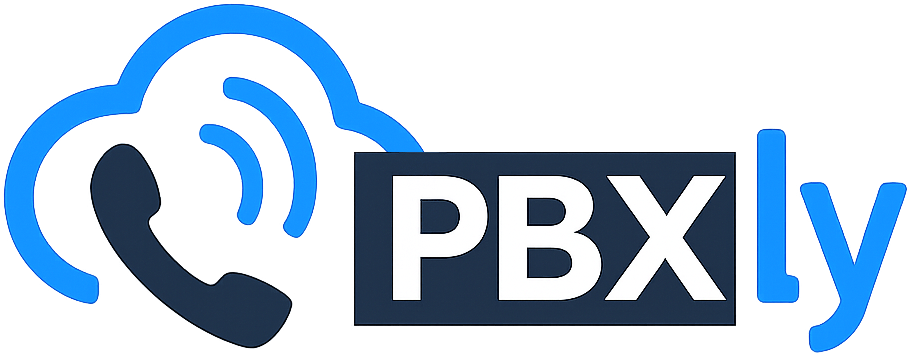· 6 min read
Mastering Business Communication: A Complete Guide to Modern PBX Systems
Ever wondered how modern businesses manage their phone systems efficiently? Welcome to the world of PBX (Private Branch Exchange) systems!

In today’s fast-paced business environment, effective communication is the cornerstone of success. Enter the world of PBX (Private Branch Exchange) systems, the backbone of modern business communication. With PBXly’s cloud-based solution, managing your business phone system becomes seamless and efficient. Let’s explore how modern PBX systems are transforming business communication.
PBX Systems Unveiled
A PBX (Private Branch Exchange) is a private telephone network used within a company or organization. It allows users to share a certain number of external phone lines while making internal calls free of charge. Modern cloud-based PBX systems like PBXly eliminate the need for expensive hardware while providing advanced features.
Imagine a small business with 10 employees but only 3 external phone lines. A PBX system allows all employees to make and receive calls using these 3 lines, with intelligent routing ensuring calls reach the right person. That’s PBX in action, optimizing communication efficiency.
The Power of Cloud-Based PBX
Unlike traditional on-premise systems that require expensive hardware and maintenance, cloud-based PBX systems offer flexibility, scalability, and cost-effectiveness. The result? Lower operational costs, easier management, and access to advanced features without the complexity.
Think of cloud PBX as a virtual phone system. Just as cloud storage eliminated the need for physical servers, cloud PBX eliminates the need for physical phone equipment. It’s like having a professional phone system that grows with your business, accessible from anywhere in the world.
Why Modern PBX Systems Matter
In today’s digital-first business landscape, traditional phone systems are becoming obsolete. Modern PBX systems are the future. They:
- Reduce Costs: Eliminate expensive hardware and maintenance costs
- Enhance Productivity: Provide features like call forwarding, voicemail, and auto-attendant
- Improve Customer Service: Ensure calls are routed to the right person quickly
- Support Remote Work: Enable employees to work from anywhere with mobile apps
For instance, if you’re running a customer service team. A well-configured PBX system can automatically route calls based on department, agent availability, or customer priority. This ensures customers get the help they need quickly, improving satisfaction and reducing wait times.
Key Features of Modern PBX Systems
Every aspect of your PBX system should enhance your business communication. Here’s what a comprehensive PBX solution includes:
- Auto-Attendant: Professional greeting that directs callers to the right department
- Call Routing: Intelligent routing based on time, availability, or department
- Voicemail: Professional voicemail with email notifications
- Conference Calling: Host multi-party calls with advanced audio controls
- Mobile Integration: Take your business phone with you anywhere
- Analytics: Track call metrics and performance insights
- Integration: Connect with CRM, helpdesk, and other business tools
Imagine a customer calling your business. They’re greeted by a professional auto-attendant that asks them to select their department. The call is then routed to the appropriate team member, or if no one is available, it goes to voicemail with an email notification. This creates a professional experience for your customers.
Traditional vs. Cloud PBX
While both serve the same purpose, they differ significantly:
- Traditional PBX: Requires expensive hardware, on-site maintenance, and limited scalability
- Cloud PBX: No hardware needed, automatic updates, unlimited scalability, and lower costs
Consider a growing business. With a traditional PBX, adding new extensions requires hardware installation and configuration. With cloud PBX like PBXly, you can add extensions instantly through a web interface, with no hardware costs or installation delays.
The Future of Business Communication
The business communication landscape is evolving rapidly. Modern PBX systems are becoming more intelligent with AI-powered features, better integration capabilities, and enhanced security. Regular updates ensure your system stays current with the latest technology.
Let’s say you have a PBX system with AI-powered call routing. The system learns from call patterns and automatically routes calls to the most appropriate agent based on their expertise and availability. This reduces wait times and improves customer satisfaction.
PBX Systems in Action
Modern PBX systems are versatile tools that serve various business needs. They handle everything from basic call management to complex multi-location setups. They’re not just about making calls but about creating efficient, professional communication workflows.
Presented below are several common PBX deployment scenarios. Each represents a different approach to business communication, tailored to specific organizational needs.
Small Business PBX
Purpose: Designed for small businesses with 5-50 employees who need professional phone features without the complexity.
Features: Auto-attendant, basic call routing, voicemail, mobile apps, and simple management interface.
Focus: Providing professional communication capabilities at an affordable price point.
Key Differentiator: Unlike enterprise solutions, small business PBX focuses on simplicity and ease of use.
Example: A law firm with 10 employees needs professional call handling, voicemail, and the ability to work remotely.
Enterprise PBX Solution
Purpose: Designed for large organizations with complex communication needs and multiple locations.
Features: Advanced call routing, multi-site management, detailed analytics, CRM integration, and custom workflows.
Focus: Providing comprehensive communication management for complex organizational structures.
Key Differentiator: While small business PBX focuses on simplicity, enterprise solutions offer advanced features and customization.
Example: A national retail chain with 100+ locations needs centralized call management, detailed reporting, and integration with their CRM system.
Call Center PBX
Purpose: Optimized for high-volume call environments with specific requirements for call queuing and agent management.
Features: Call queuing, agent monitoring, performance analytics, quality assurance tools, and integration with helpdesk systems.
Focus: Maximizing agent productivity and call handling efficiency.
Key Differentiator: Unlike general business PBX, call center solutions focus on call volume management and agent performance.
Example: A customer service center handling 1000+ calls daily needs efficient call distribution, agent monitoring, and performance tracking.
Remote Work PBX
Purpose: Designed for distributed teams and remote work environments with mobile-first features.
Features: Mobile apps, web-based interfaces, softphones, video calling, and collaboration tools.
Focus: Enabling seamless communication regardless of location or device.
Key Differentiator: While traditional PBX requires physical presence, remote work PBX enables communication from anywhere.
Example: A consulting firm with employees working from home needs professional phone capabilities accessible from any device.
Healthcare PBX
Purpose: Specialized for healthcare organizations with HIPAA compliance and medical-specific features.
Features: HIPAA-compliant messaging, emergency call handling, integration with medical systems, and patient privacy protection.
Focus: Ensuring secure, compliant communication in healthcare environments.
Key Differentiator: Unlike general business PBX, healthcare solutions prioritize compliance and patient privacy.
Example: A medical practice needs secure communication that complies with healthcare regulations while maintaining patient confidentiality.
Multi-Location PBX
Purpose: Designed for businesses with multiple offices or locations that need unified communication management.
Features: Centralized management, inter-office calling, unified numbering, and location-specific routing.
Focus: Providing consistent communication experience across all business locations.
Key Differentiator: Unlike single-location PBX, multi-location solutions manage communication across distributed organizations.
Example: A restaurant chain with 20 locations needs unified phone management, inter-location calling, and centralized customer service.
Conclusion
In the business communication symphony, modern PBX systems become the conductor. They orchestrate calls, manage workflows, and ensure seamless communication. As we move forward, the key is to choose a PBX solution that grows with your business, provides the features you need, and delivers the reliability your customers expect.
Imagine a world where every business call is handled professionally, efficiently, and cost-effectively. This showcases the potential of modern PBX systems. For startups seeking to establish professional communication or established businesses looking to upgrade their phone system, cloud-based PBX solutions like PBXly can serve as the catalyst for improved customer service and operational efficiency.
The future of business communication is here, and it’s cloud-based, feature-rich, and designed for the modern workplace. Whether you’re a small business looking to sound more professional or an enterprise seeking to streamline communication, the right PBX system can transform how your business connects with customers and operates internally.



